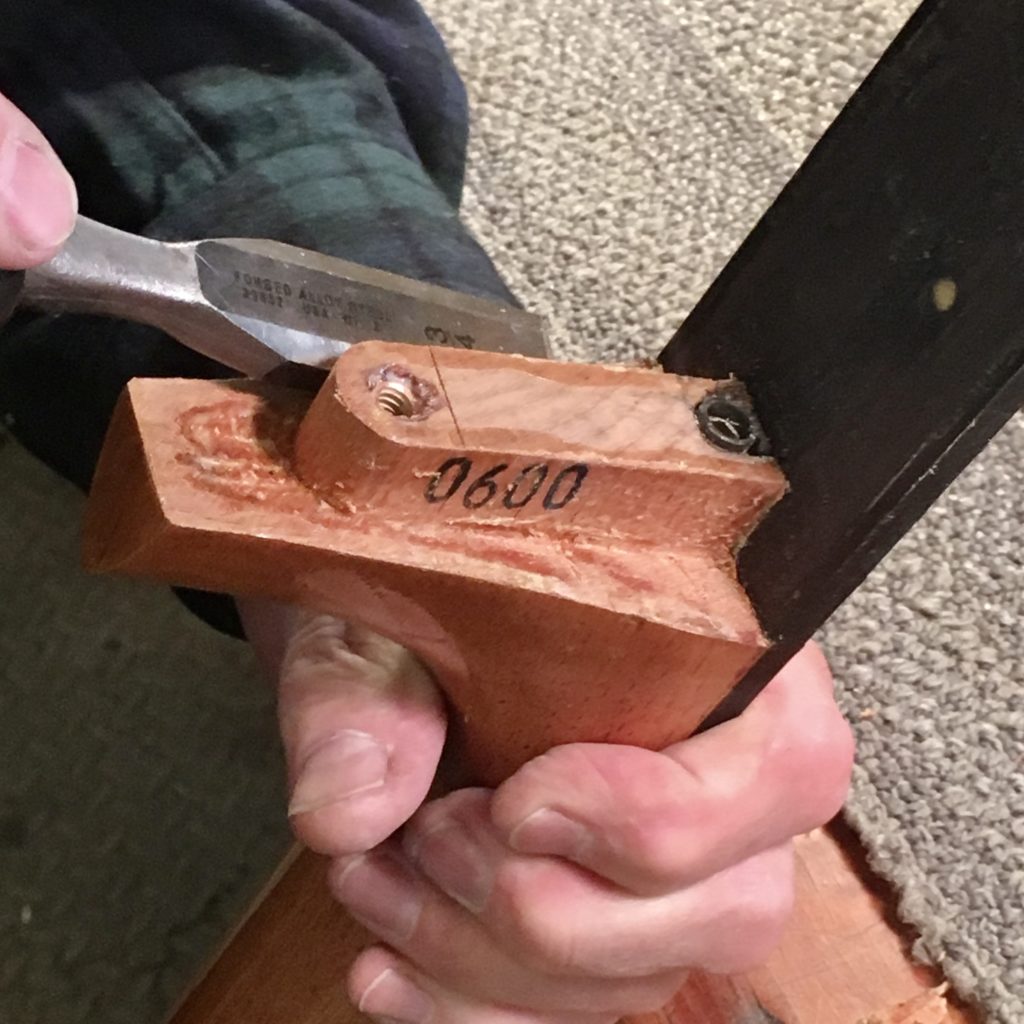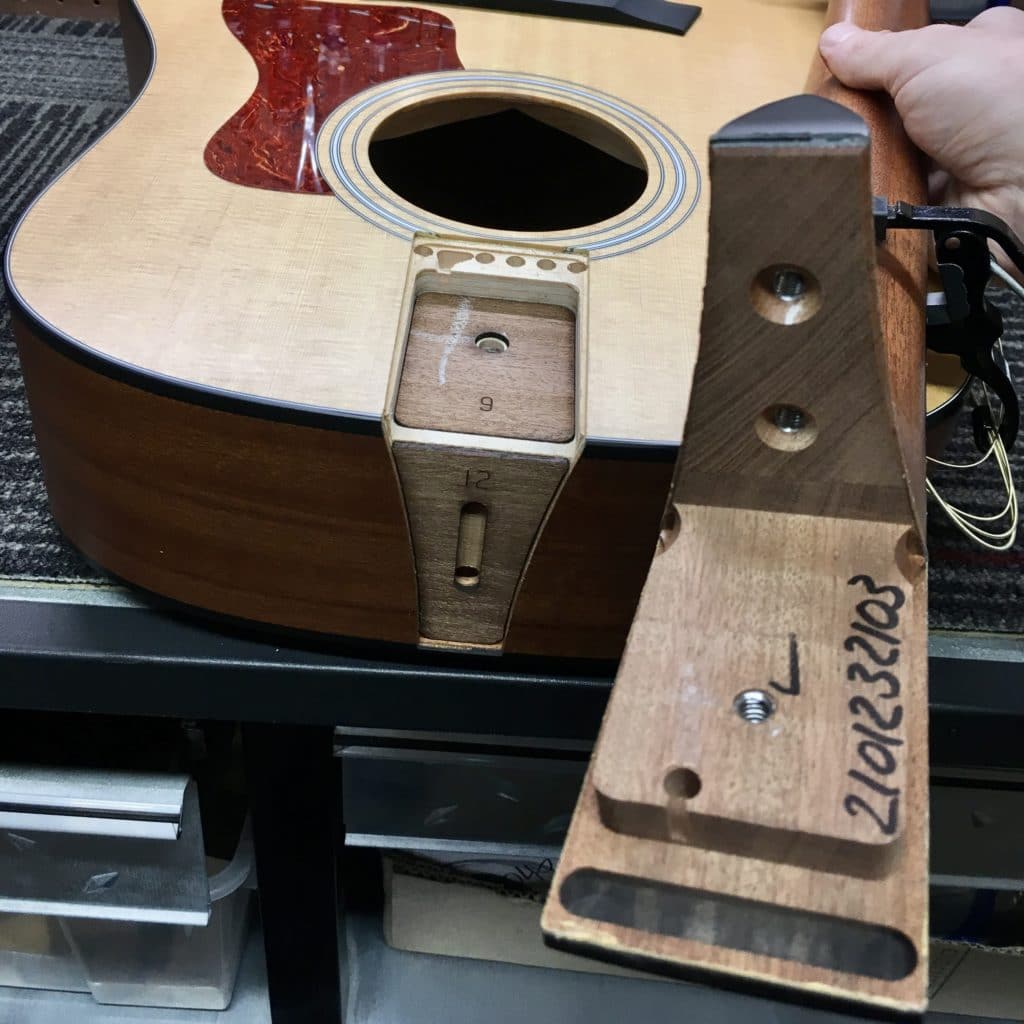Oftentimes, action adjustments can be made via the instrument’s truss rod and saddle. This process is commonly called a setup. However, proper setup is only possible within a limited range. If the geometry of the instrument is not within certain specs, proper setup will not be possible. Given the substantial demands placed upon it, it is not surprising that, sooner or later, even the finest instruments will require a more substantial overhaul. Often, this will involve a neck reset. A neck reset is the process of readjusting the angle at which the neck is joined to the body.
Traditionally, an acoustic guitar neck is attached to the body using a glued joint called a “dovetail”. While strong and reliable, these types of joints require a substantial effort to separate and reassemble once required. As a result, neck resets on dovetail style neck joints require an experienced hand and carry a considerable price tag. Since most acoustic guitars will require a neck reset at least once over their lifespan, many manufacturers have sought to redesign their neck joints in a variety of ways with the goal of making assembly and neck resets less labor intensive and more cost efficient to perform.



